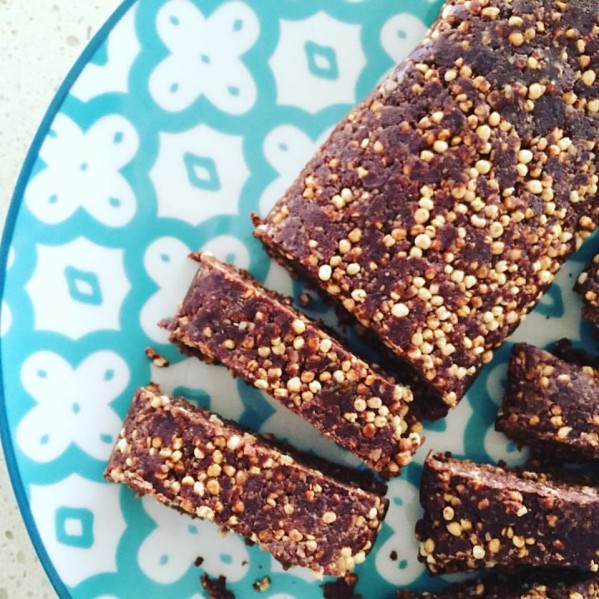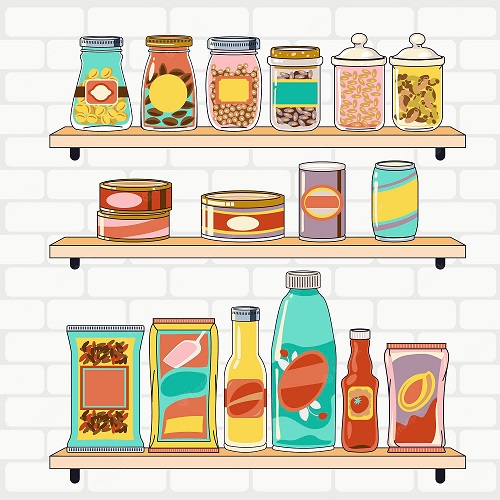When looking at the overall consumption of grains in your daily diet, how does it stack up in terms of variety and nutrition? Let’s tally it up… breakfast…. toast? cereal? Lunch…. a white sandwich or wrap perhaps? And dinner did it include pasta, noodles or more bread?
Now look and see what the common theme is. A diet of refined wheat products or processed carbohydrates with a lack of nutrient-rich grains.
Wholegrains are commonly overlooked in our diets but with so many great nutrient-rich grain alternatives readily available, it is hard to work out why.
The key factor when choosing healthier carbohydrates should begin with reducing your quantity of refined carbohydrate and consistently choosing a higher quality form of carbohydrates. It’s common to overeat carbohydrates in a time-constrained day with the pitfalls being increased stored body fat and insulin blood sugar level spikes. Leaving you feeling tired and nutrient robbed (hello carb coma).
In a nutshell, each opportunity to eat should be focussed towards choosing the most nutritionally dense foods possible. Carbohydrates are responsible for carrying a large chunk of our nutrients and phytochemicals, so choose wisely. Choices such as fruits, vegetables, whole grains, legumes and nuts pack a far more powerful nutritional punch than refined grains, starches and sugars. The bonus of water and fibre in complex carbohydrates helps slow down the absorption of glucose which lowers an insulin response. Therefore, it makes sense to eat whole, unrefined foods which assist with satiety and holding the munchies at bay.
Not only are you enjoying different tastes but by eating a variety of whole grain foods you are engulfing a wider scope of nutrients. Apart from the usual culprits’ oats, rice and corn, other grains to consider are:
7 Other Nutrient-Rich Grain Alternatives to Include in Your Diet
- Barley
Highest in fibre of all the whole grains. Barley has an inedible outer hull, the most popular way to buy it is pearled. This does lower the bran content due to its harshness on the grain so eating hulled barley (the outer husk is carefully removed) or hull less barley are better options. Try adding it to salads and as an addition to stews and soups.
- Quinoa (keen-wa)
Not technically a grain, quinoa is a relative to beetroot and spinach. The seed is grown on magenta stalks and there are 120 different varieties ranging in colour. Quinoa flakes, flour and puffs are becoming increasingly available at health food stores and is one of the only plant foods to boast being a complete protein. Try my rainbow quinoa salad
- Spelt
Spelt is a distant relative to wheat and although it does still contain gluten, it doesn’t seem to cause sensitivities in many people who are intolerant of wheat. Due to spelt’s high water solubility, the grain can be absorbed quickly into the body and easily digested. Spelt has more protein, fats and crude fibre than wheat. Try using it in bread, porridge and baked goods.
- Buckwheat
Buckwheat has no gluten so can be eaten by people with coeliac disease or gluten allergies. It’s a cousin of rhubarb and not technically a grain at all – and certainly not a kind of wheat. Found most commonly in Japanese soba noodles, buckwheat is the only grain known to have high levels of an antioxidant called rutin.
- Amaranth
Is in actual fact a highly nutritious seed but called a grain. A gluten-free food, amaranth is also easily digested, and around 8 x more iron than wheat. A lively, peppery taste, the protein (a whopping 14%) in amaranth is referred to as “complete” because it has lysine, an amino acid missing or negligible in many grains. It is popular in cereals, bread, muffins, crackers and pancakes.
- Teff
Teff is the smallest known grain in the world, tinier even than a poppy-seed. It’s used most commonly in the flatbread injera, which is eaten across East Africa. Teff is high in iron and calcium and packed full of B vitamins, which makes it great for energy plus it has an estimated 20-30 per cent resistant starch, which is a type of fibre that helps blood sugar management, weight control and maintaining gastrointestinal health.
- Freekah
Freekeh is hard wheat (often durum wheat) that is harvested when the plant is still young and green, then roasted and rubbed. This unique process gives freekeh its signature smoky flavour. Similar to bulgur wheat, freekeh is often sold cracked into smaller, quicker cooking pieces. Use in tabouli salads or cook it into a delicious porridge.
Puffed Quinoa and Cocao Slice
+ 10-15 dates (less gives less sweetness)
+ 1 cup shredded coconut…
+ 1/4 cup almond meal
+ 3 tbs raw cacao powder
+ 2 tbs coconut oil
+ 1 tsp vanilla paste
+ 1/2 cup puffed quinoa
How to make
1// In a food processor add the dates and process until finely diced
2// Add each ingredient in order and process until it is dough-like but so it leaves the bowl clean and not too gooey. (add more almond meal if necessary) Place the quinoa puffs in last and mix gently until combined
3// Press out on to a tray and flatten with some baking paper, then roll!
4// Place in the fridge or freezer for 30 minutes, then cut into slices






